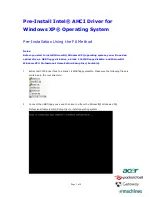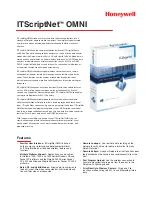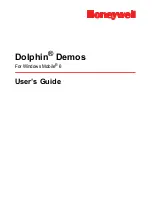
Appendix D. An Introduction to Disk Partitions
83
D.1.2. Partitions: Turning One Drive Into Many
As disk drive capacities soared, some people began to wonder if having all of that formatted space
in one big chunk was such a great idea. This line of thinking was driven by several issues, some
philosophical, some technical. On the philosophical side, above a certain size, it seemed that the
additional space provided by a larger drive created more clutter. On the technical side, some file
systems were never designed to support anything above a certain capacity. Or the file systems
could
support larger drives with a greater capacity, but the overhead imposed by the file system to track files
became excessive.
The solution to this problem was to divide disks into
partitions
. Each partition can be accessed as if it
was a separate disk. This is done through the addition of a
partition table
.
Note
While the diagrams in this chapter show the partition table as being separate from the actual disk
drive, this is not entirely accurate. In reality, the partition table is stored at the very start of the disk,
before any file system or user data. But for clarity, they are separate in our diagrams.
Figure D-5. Disk Drive with Partition Table
As Figure D-5, shows, the partition table is divided into four sections. Each section can hold the
information necessary to define a single partition, meaning that the partition table can define no more
than four partitions.
Each partition table entry contains several important characteristics of the partition:
•
The points on the disk where the partition starts and ends
•
Whether the partition is "active"
•
The partition’s type
Let us take a closer look at each of these characteristics. The starting and ending points actually define
the partition’s size and location on the disk. The "active" flag is used by some operating systems’ boot
loaders. In other words, the operating system in the partition that is marked "active" is booted.
The partition’s type can be a bit confusing. The type is a number that identifies the partition’s antic-
ipated usage. If that statement sounds a bit vague, that is because the meaning of the partition type
is a bit vague. Some operating systems use the partition type to denote a specific file system type, to
flag the partition as being associated with a particular operating system, to indicate that the partition
contains a bootable operating system, or some combination of the three.
By this point, you might be wondering how all this additional complexity is normally used. Refer to
Figure D-6, for an example.
Summary of Contents for ENTERPRISE LINUX 3 - FOR X86-ITANIUMTM-AMD64 AND INTEL EXTENDED MEMORY 64 TECHNOLO
Page 6: ......
Page 12: ...vi Introduction ...
Page 70: ...58 Chapter 4 Installing Red Hat Enterprise Linux ...
Page 92: ...80 Appendix C Troubleshooting Your Installation of Red Hat Enterprise Linux ...
Page 112: ...100 Appendix G Additional Resources about Itanium and Linux ...
Page 118: ......
Page 120: ...108 ...
















































